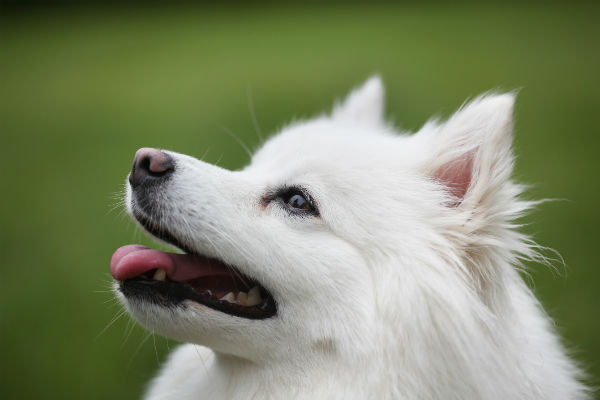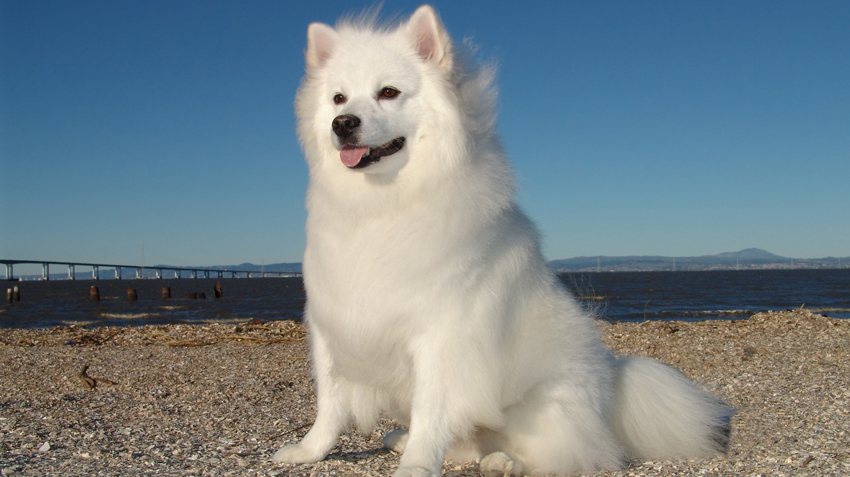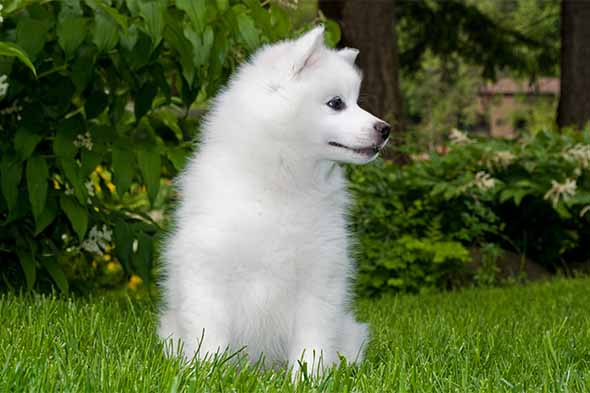
American Eskimo Dog
The American Eskimo Dog never fails to bring a smile to my face. With their fluffy white coat and bright, expressive eyes, they look like living teddy bears. I’m always amazed by their intelligence and eagerness to please. There’s something magical about watching an «Eskie» prance around with that unmistakable spring in their step, their plumed tail waving like a flag of joy. I adore how they seem to radiate happiness, their black button nose and mischievous grin hinting at a playful spirit. Whenever I see an American Eskimo Dog, I’m reminded of winter wonderlands and cozy evenings by the fire, with a loyal companion always ready for adventure or cuddles.
History and Origin of the American Eskimo Dog
The American Eskimo Dog, affectionately known as the «Eskie,» has a rich and fascinating history. Contrary to what their name might suggest, Eskies do not originate from Alaska or have any connection to Eskimo culture. Instead, they belong to the Spitz family, which includes breeds known for their thick fur, pointed ears, and curled tails. Their roots can be traced back to German immigrants who brought their small white Spitz dogs to America in the late 19th century. These dogs were initially called «American Spitz,» but the name was changed to American Eskimo Dog during World War I due to anti-German sentiment.

Physical Characteristics of the American Eskimo Dog
The American Eskimo Dog is a strikingly beautiful breed with a plush, white coat that gives them an elegant and pristine appearance. They come in three size varieties: Toy, Miniature, and Standard. Despite their size differences, all Eskies share common physical traits:
- Coat: Thick, double-layered, and fluffy, providing excellent insulation.
- Eyes: Bright, expressive, and almond-shaped, usually dark in color.
- Ears: Erect and triangular, contributing to their alert expression.
- Tail: Plumed and carried over the back in a graceful curve.
Personality and Temperament of the American Eskimo Dog

American Eskimo Dogs are known for their friendly and outgoing personalities. They are intelligent, eager to please, and highly trainable, making them excellent companions and performers in agility and obedience competitions. Eskies are naturally alert and make good watchdogs, although they are not aggressive. They thrive on human companionship and enjoy being involved in family activities. Their playful and spirited nature means they need plenty of mental and physical stimulation to stay happy and well-behaved.
Basic Needs of the American Eskimo Dog
To keep an American Eskimo Dog healthy and happy, it’s essential to meet their basic needs:
- Diet: A balanced diet rich in protein and essential nutrients. Portion control is important to prevent obesity.
- Exercise: Regular exercise to burn off their high energy levels. Daily walks, playtime, and mental challenges are crucial.
- Grooming: Frequent brushing to manage their thick coat and reduce shedding. Regular baths and nail trimming are also necessary.
- Healthcare: Routine veterinary check-ups and vaccinations to maintain overall health and well-being.
Suitable Environment for the American Eskimo Dog

American Eskimo Dogs thrive in environments where they can be active and engaged. They adapt well to both city and country living as long as they get enough exercise and mental stimulation. Eskies are happiest when they are part of family activities and have access to a secure yard to play in. They can tolerate cold weather well due to their thick coat, but they should not be left outside for long periods. Social interaction and a loving environment are key to preventing boredom and destructive behavior.
Training and Care for the American Eskimo Dog

Training an American Eskimo Dog is a rewarding experience due to their intelligence and eagerness to learn. Positive reinforcement techniques, such as treats and praise, work best. Consistent training from a young age helps establish good behavior and social skills. Crate training can also be beneficial. Regular care routines, including grooming and dental hygiene, are essential to keep them looking and feeling their best. Providing toys and puzzles can help keep their minds sharp and prevent boredom.
Health and Common Issues in the American Eskimo Dog
While generally healthy, American Eskimo Dogs are prone to certain health issues:
- Hip Dysplasia: A common condition in many dog breeds that can lead to arthritis.
- Progressive Retinal Atrophy (PRA): A genetic condition affecting eyesight.
- Allergies: Skin allergies that may require special diets or medication.
- Dental Issues: Regular dental care is crucial to prevent gum disease and tooth loss.
Life Expectancy of the American Eskimo Dog
The American Eskimo Dog typically enjoys a long and healthy life, with an average lifespan of 12 to 15 years. With proper care, a balanced diet, and regular veterinary check-ups, many Eskies live well into their late teens. Maintaining their health and happiness requires a commitment to meeting their physical, mental, and emotional needs throughout their lives.
The American Eskimo Dog in Daily Life

Having an American Eskimo Dog as part of your life is a joyous experience. These dogs bring endless energy and affection into a home. Their intelligence and playful nature make them delightful companions who are always ready for an adventure. Whether it’s a brisk walk in the park, a game of fetch, or a relaxing evening cuddled up on the couch, an Eskie’s presence enriches everyday moments. Their loyalty and love create a strong bond that is cherished by their owners.
Frequently Asked Questions (FAQs)
Are American Eskimo Dogs hypoallergenic?
No, American Eskimo Dogs are not considered hypoallergenic. While they do shed less than some other breeds, they still produce dander, which can trigger allergic reactions in sensitive individuals.
How much exercise do American Eskimo Dogs need daily?
American Eskimo Dogs are energetic and active breeds that require regular exercise to stay happy and healthy. They benefit from daily walks, play sessions, and mental stimulation activities to keep them physically and mentally stimulated.
Do they get along well with children and other pets?
Yes, American Eskimo Dogs are generally good with children and other pets when properly socialized from a young age. Supervision is always recommended, especially with young children, to prevent any accidental rough play.
Are they prone to excessive barking?
American Eskimo Dogs are known for their vocal nature and may bark to alert their owners of any perceived threats or strangers approaching. Proper training and socialization can help curb excessive barking behavior.
What grooming routine is recommended for American Eskimo Dogs?
American Eskimo Dogs require regular grooming to keep their coat clean and free of mats. Weekly brushing is recommended to remove loose fur and prevent tangles. Additionally, regular nail trimming, ear cleaning, and dental care are essential parts of their grooming routine.
Do they require professional grooming?
While American Eskimo Dogs can be groomed at home with proper tools and techniques, some owners may opt for professional grooming services, especially for breed-standard trims or if they have difficulty managing their dog’s coat.
Are American Eskimo Dogs easy to train?
Yes, American Eskimo Dogs are highly intelligent and eager to please, making them relatively easy to train. Positive reinforcement techniques and consistency are key to successful training sessions.
What type of living situation is best suited for this breed?
American Eskimo Dogs thrive in homes where they receive plenty of attention, exercise, and mental stimulation. They adapt well to various living situations but require an active lifestyle to keep them happy and fulfilled.
Are they prone to separation anxiety?
American Eskimo Dogs form strong bonds with their owners and may experience separation anxiety if left alone for extended periods. Proper training, mental stimulation, and gradually increasing alone time can help prevent or mitigate separation anxiety.
What is the average lifespan of an American Eskimo Dog?
The average lifespan of an American Eskimo Dog is around 12 to 15 years, though some individuals may live longer with proper care and nutrition.
